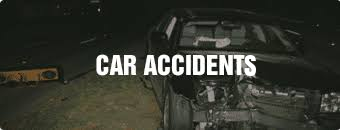Dealing with lawsuits and the legal system’s ins and outs can be some of the most challenging parts of adulthood.
From personal injury claims to real estate cases, you’ll encounter motions, hearings, and settlements. All of these can be difficult to navigate.
That’s why we suggest contacting a lawyer as soon as a crisis strikes. A great lawyer can lower the stress level that comes with your lawsuit. They do this by handling the paperwork and using their expertise and experience to provide multiple plans of action to discuss and execute. One important area lawyers can assist with is summary judgements. If you’re wondering: “What is a summary judgement motion, and how can a lawyer help me with it?” read below!
Summary Judgement: What it is and How it Works
A summary judgement motion is used in cases that don’t necessarily need to go to trial. A judge may also grant partial summary judgement to determine certain aspects of a case. For personal injury cases, you may still need to go to trial to determine the amount of the damages involved, but usually you can rely on summary judgements to determine liability.
Let’s look at an example to make things a bit clearer: Imagine you’re in a car that gets side-swiped on the highway. After the accident takes place, you’ll get the other driver’s information. If you’re pressing charges, you’ll be the plaintiff, and they’ll be the defendant.
They, as the defendant, may initiate a summary judgement motion as a way to get the case (or the part this claim is about) thrown out or settled outside of court. This labels them the “movant.” When the movant does this, both parties agree upon the material facts of the case. Alternatively, you can initiate one to settle a particular aspect of the case out of court as well.
Material Facts in Summary Judgement Motions
Material facts are those that have legal significance. Not all facts are material facts. Whether material facts are disputed can affect the summary judgement at hand, so it’s important to understand what they are and how they operate.
Some facts of the case can include where the accident occurred. This, traditionally, would be a regular fact. However, if there was a stop sign at the intersection where the accident occurred, and the defendant didn’t stop, it gains legal significance. If nearby street cameras show that the defendant did stop, this material fact becomes disputed.
Say, for the sake of argument, that this street camera doesn’t exist, and both parties claim different things. You, as the plaintiff, think they didn’t stop, whereas they believe they did. The outcome will depend on the language of the case and what the plaintiff is alleging.
For example, if the case alleges the defendant ran the stop sign, it will go to trial. If, however, the suit says the defendant didn’t adhere to the right of way, then whether or not they ran the stop sign loses its status as a material fact. It all depends on if the outcome of the case itself depends on it.
Who Can File a Motion for Summary Judgement?
Both plaintiffs and defendants have the right to file a motion for summary judgement. This puts it in a unique class of legal situation, as most others are limited to a single party.
Skip the stress of filing the case and different motions when you contact Diamond and Diamond Law today.
Process of a Civil Lawsuit
A civil lawsuit begins with a complaint from a plaintiff. This complaint is a formally written document that details the alleged incident in question, which is then delivered to both the court and the defendant.
The defendant will then respond to this complaint within a predetermined time frame. The defendant will have the option to go to trial or file a counterclaim. Next, each party will have a period of discovery where they research, document, and organize their argument.
Either party may then file a motion for summary judgement. If the motion is granted by the court, summary judgment will occur for either part of the case or the whole thing.
If the case still goes to trial, you’ll participate in pretrial litigation. This is where both parties exchange information regarding evidence with one another. Once this is complete, the trial can officially begin.
Need Help Filing a Summary Judgement Motion?
It’s completely understandable if you’re feeling overwhelmed about summary judgements. Luckily, Diamond & Diamond can help with a FREE case evaluation.
Let our experienced lawyers analyze and prep your case with you.
“Giving your lawyer all the information of the incident can greatly increase your chance of winning the case.”
Pro Tip














